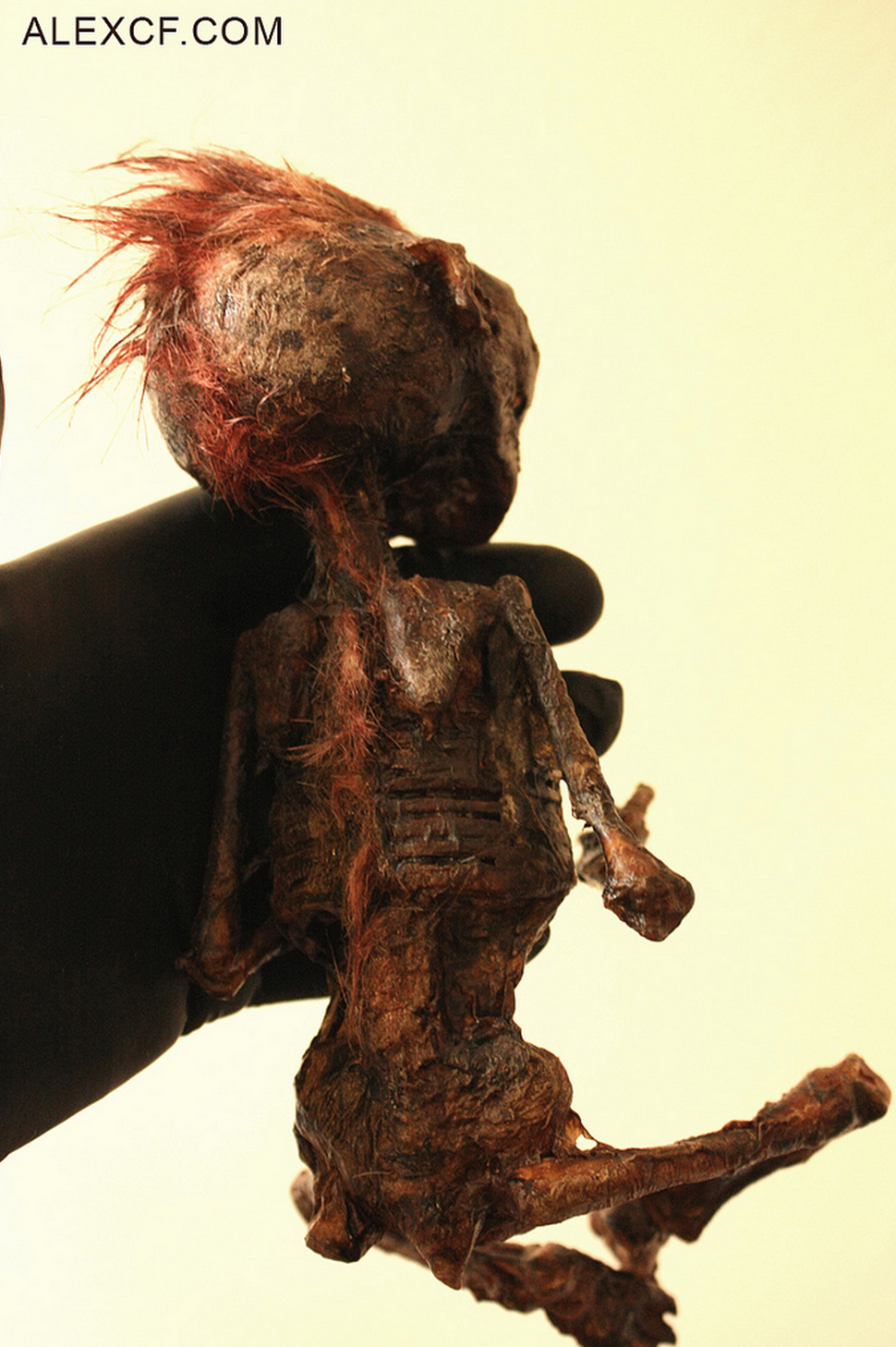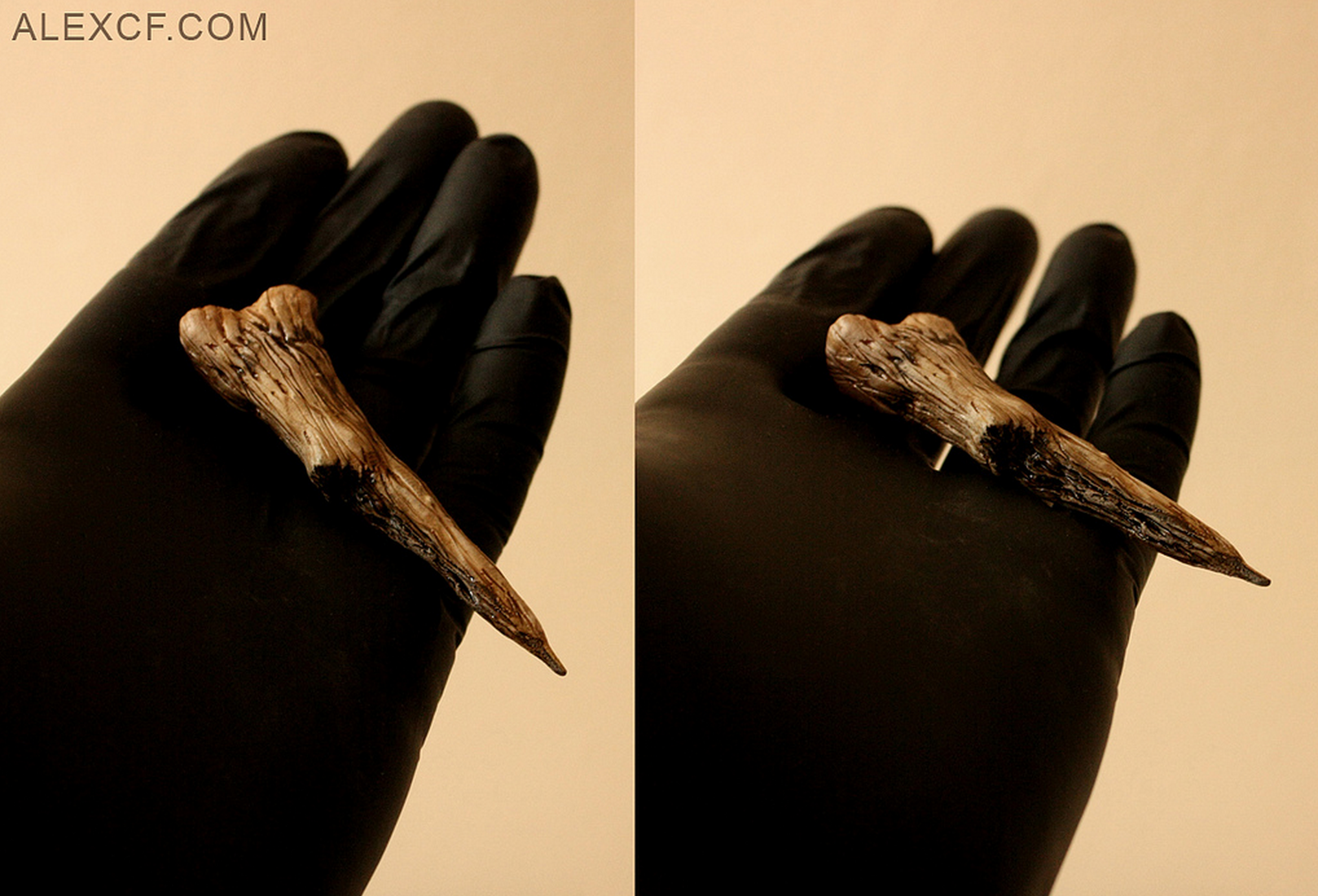All images copyright Alex CF 2014. Please credit and attach a link if used outside this website.
Homunculi
Bipedal, Carnivore
“The preserved body of a Gnome like creature, presented in a fine Edwardian miniature cabinet”
Homunculi – or Gnome. A diminutive Hominid species found in the wilds of the Arctic Circle, they are the smallest known relative of Homo Sapien. They build burrows like that of a badger, and use their large, spade like feet to dig these sets. Although their physiology is remarkably similar to us, their evolution has endowed them with some curious and fascinating traits. They are tool using and own possessions, and form complex hierarchical social groups.
Homunculi were hunted to extinction for that very reason. Gnomes communicate via pheromones, released from scent glands in their hind quarters. They distinguish each other by these unique musky aromas and within these scents are a variety of emotional and physiological tells – with which the colony can communicate many gestures and needs with a single note. Sadly it became apparent that this musk is also a highly potent psychotropic substance, which is released when the animal is scared.
The emissions will dull the senses of the aggressor and cause a sense of euphoria, described in the shunned Almanac Unaussprechlichen Kulten as “a window to the other realm”. Further analysis of the substance shows a very similar chemical to psilocybin, which is found in certain species of psychoactive mushroom. Ingesting this will cause psychedelic hallucinations, and rather particular to this substance, hyper exaggerated perception of reality, described by those exposed as the “faerie realm”.
It is important to mention that some species of Faerie have also been shown to contain these chemicals in their blood. No evolutionary link has been found between these two species, although Faerie do cultivate mushrooms within their hives as a food source, and may indeed ingest psilocybin as a result.
It is believed that the few encounters with these creatures, and their defense mechanism is directly responsible for all manor of mythological story linked to diminutive species – granting wishes for one can be seen as part of the psychedelic experience. It is also important to examine other fantastical tales linked to this species. During courtship, the males develop red downy filaments upon the head and down the spine. From a distance, this shock of red can be perceived a conical shape, rather like a hat. Homuncili are also tool users, like other primate relatives, they use bone, wood and rock fragments and found objects to aid themselves, in this case, warren building or defending their territory. An example of a bone, chewed to a point, is presented here, and a discarded paintbrush, with a crude cutting blade made of a rusted piece of metal attached to the end. Some Homunculi have also been shown to fashion tanned leathers from small animal skins for use in basic coverings to provide warmth.
In the 16th and 17th century the creatures were caught and kept in cages and cowed into releasing clouds of musk when agitated or starved. The animals would almost certainly die from malnutrition as one of their main sources of food is a deep burrowing root that supplies unique sugars needed in stabilizing blood sugar levels within their bodies. Without this they suffered a form of diabetes. Most, if not all examples of Gnome slavery as a form of drug culture faded into obscurity, until Merrylin heard of an unscrupulous quack doctor from America who was purported to have one in his possession.
In 1858, Merrylin traveled to New york and frequented many brothels and Opium houses in search of this man. He found him at Madam La rouge’s secret garden, in a private room, sat in Hallucinogenic stupor upon a Chaise longue, dressed in a bizarre hotchpotch of military regalia, his tongue hanging loosely from a moustachioed mouth. Before him a cage, and cowering in the corner of which, its body covered in scars from its masters cruel hand, was a living Homunculi.
Merrylin searched the gentleman’s belongings, and found a large medical bag, within which were many faux potions, bottles of arsenic and doping elixirs.
Yet the most disturbing items were the two large glass jars containing what appeared to be women’s Uteri. He glanced back at the catatonic gentleman and heaved him upright. “Where did you get these?” He pushed the jar into the mans face, Tightening his grip on the scruff of his coat. From the watery depths of his delusion some degree of acknowledgment surfaced with a wry smile. “I bought them good sir, all in good taste!’
Merrylin dropped the man, took the bag and picked up the cage. He left and caught the fastest steamer back to England.
It is recorded in the diary of Hoxton Butcher, Merrylins chief getter of things and hired muscle that the Gnome lived for a long while, and that one particular morning Merrylin was seen, along with five of the staff from Merrylin house, digging up the grounds in search of “some particular root”
Of the man in the Opium den, this would not be the last time that Merrylin would encounter Mr.Tumblety.














